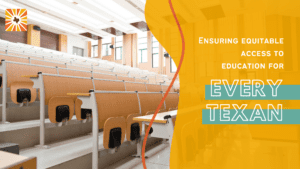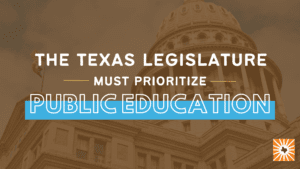
High Hopes, but Low FAFSA Completion Rates
Twitter Facebook Linkedin At the start of the year, educators and families across the U.S. were excited about the release of a better FAFSA. Texans from all corners of this
From 2008 - 2016, the number of part-time students at 4-year universities increased by 78% in Texas.
Postsecondary education is critical for driving prosperity for all Texas families. The high cost of postsecondary education and dwindling financial aid, however, make it hard for students to afford a postsecondary education. This is especially true for so-called non-traditional students such as part-time and financially independent students.

The cost of postsecondary education in Texas has been consistently rising, with Texas families assuming more and more of the cost of higher education. While the staggering costs of postsecondary education negatively impact all Texans, certain students face unique challenges that are critical to address in order for the state to meet its higher education goals.
The number of students that the state reaches with its financial aid programs is quite low, with 2-year, part-time, and independent students particularly disadvantaged. It’s critical that we invest in higher education access now to ensure prosperity for all Texans in the future.
Lawmakers have chosen to limit state funding for financial aid, and they have focused the limited funding on full-time students attending 4-year public universities. Students attending universities have to pay more for their education than students in public community colleges, and evidence shows that students attending full-time are more likely to graduate. The decision to focus on 4-year public college and university students, however, means that the state provides little or no assistance to non-traditional students. Especially under-supported are people who could benefit greatly from support such as those who, due to financial or familial constraints, are unable to attend full-time, who do not have additional financial support from their families, or who decide to begin their postsecondary education at a community college.

Senior Policy Analyst

Community Engagement Coordinator

Twitter Facebook Linkedin At the start of the year, educators and families across the U.S. were excited about the release of a better FAFSA. Texans from all corners of this

All students – regardless of race, class, or gender – deserve affordable post-secondary education. Access to financial aid makes it possible for many students to attain post-secondary education and pursue

All children in Texas have the right to quality public education; according to the Texas Constitution, our public education system must ensure all kids have access to an education that